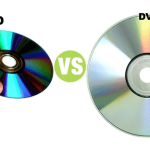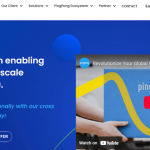Genomics & Bioinformatics APIs are transforming how researchers, biotechnologists, healthcare providers, and pharmaceutical organizations analyze and apply biological data. As the life sciences industry continues to digitize, genomic datasets have grown at an exponential rate. Traditional analysis methods are no longer adequate to handle the scale and complexity of sequencing data. APIs have emerged as a powerful bridge, enabling seamless access to genomic computation, variant interpretation, machine learning workflows, and secure exchange of sensitive health information.
The biomedical ecosystem now relies on rapid data insights to drive precision medicine, accelerate research, and improve patient outcomes. Genomics & Bioinformatics APIs offer the flexibility to integrate cutting edge analytical capabilities directly into existing applications, removing the need for costly infrastructure or deeply specialized in house software engineering. They enable researchers to focus on scientific breakthroughs rather than the technical logistics of data processing.
Understanding the Rise of API Driven Bioinformatics
The evolution of next generation sequencing has drastically reduced the cost and time needed to decode the human genome. As accessibility rises, so does the demand for computational resources that can process large scale datasets in real time. Bioinformatics has shifted from manual command line techniques toward cloud based automation and interoperability.
APIs provide a central point for uniform interaction between multiple tools and datasets. Instead of downloading terabytes of sequencing files or deploying specialized software, developers can connect to existing high performance pipelines through secure endpoints. This shift means that sequencing laboratories, healthcare institutions, and biotech startups can innovate faster while maintaining strict compliance with global data privacy standards.
The Power of API Integration in Genomic Research
One of the most valuable aspects of Genomics & Bioinformatics APIs is their ability to streamline the journey from raw sequence data to actionable results. Genome assembly, annotation, variant calling, and phenotype association can all be executed using cloud native pipelines designed for reproducibility and automation.
Researchers can quickly interact with curated databases like ClinVar, dbSNP, HGMD, and Ensembl through API requests. This access enables automated variant classification and clinical significance prediction, greatly reducing manual interpretation time. In drug discovery workflows, molecular modeling and target validation can be accelerated through API based analytics that integrate protein structure databases and pharmacogenomic datasets.
As APIs connect multiple stages of bioinformatics analysis, scientific collaboration also becomes more efficient. Global teams can run shared workflows and access standardized outputs, ensuring transparency in every computational step. This uniformity supports regulatory submissions where traceability and reproducibility are essential.
Precision Medicine Powered by Programmable Genomics
Modern healthcare is shifting away from generalized treatment plans toward personalized strategies driven by each patient’s genomic profile. This vision becomes practical when genomic knowledge can be instantly retrieved and interpreted at the point of care.
Through Genomics & Bioinformatics APIs, electronic health record systems can access genotype specific drug guidance, hereditary risk assessments, or rare disease markers in real time. This data boost gives clinicians confidence in prescribing medications tailored to metabolism, predicting cancer progression risks, and identifying early detection opportunities for inherited conditions.
These APIs not only support patient benefit but also unlock operational efficiencies for hospitals and genetic counseling services. Automated reporting allows healthcare professionals to spend less time processing data and more time focusing on human care.
Security and Compliance in API Driven Genomics
Handling genomic information requires unwavering trust. DNA carries identifiable and immutable personal information, making security a primary concern. Organizations adopting Genomics & Bioinformatics APIs must ensure advanced data governance frameworks that comply with international standards. This includes HIPAA for health information security, GDPR for data protection in the European Union, and additional regional genomic privacy regulations.
API providers have introduced encryption in transit and at rest, strict authentication management, anonymization practices, and role based access control. These protections allow sensitive data to flow securely between sequencing machines, analytics platforms, and clinical systems. When APIs are designed with compliance at their core, they remove major barriers to genomic data adoption in mainstream healthcare.
The Role of Cloud Technology in Scaling Bioinformatics APIs
The volume of genomic data is doubling faster than computing improvements. Cloud technology has become the foundation that supports the processing power needed for bioinformatics. APIs make it simple to request cloud resources without understanding the underlying infrastructure.
Scalable storage and distributed compute clusters allow researchers to run genome analysis pipelines within hours instead of days. This elastic performance means that small research teams can operate with capabilities similar to large genome centers. The democratization of genomic analysis ensures innovation is no longer limited by the size of an organization’s hardware environment.
Cloud ecosystems also improve integration between machine learning tools and bioinformatics workflows. Predictive models for disease classification, mutation impact, and population genomics now operate efficiently through API accessible computing resources.
Accelerating Drug Discovery and Biotechnology Innovation
Developing a new therapy can take over a decade. Genomics & Bioinformatics APIs shorten this timeline by connecting genetic insights directly to pharmaceutical research. Molecular characterization of diseases helps identify more targeted and effective drugs.
With APIs, companies can rapidly pull insights from global genomic data repositories. Machine learning based biomarker discovery tools allow faster evaluation of potential drug targets. Pharmacogenomic APIs highlight how patient variation influences treatment outcomes, reducing costly trial failures.
Biotech startups are particularly empowered by this shift. Instead of building an entire computational ecosystem from scratch, they can integrate necessary capabilities piece by piece using API access. This pay as you go computational model allows more groundbreaking ideas to enter the innovation pipeline.
Overcoming Challenges in API Adoption
While the benefits of Genomics & Bioinformatics APIs are clear, organizations must overcome several implementation hurdles. Technical teams must learn how to interact with biological data formats like FASTQ, BAM, and VCF. Interdisciplinary collaboration between software developers and scientists is essential for building intuitive applications that support real world biology workflows.
Data standardization is another major requirement. The genomics community is actively working toward harmonization frameworks that ensure interoperability between laboratories, healthcare providers, and regulatory bodies. The success of APIs depends on consistent data structures that can be universally interpreted.
Performance optimization is also key. As datasets scale into petabytes, API latency and bandwidth strategies become important considerations. Continuous improvement in compression algorithms and edge computing strategies will drive even faster innovation.
A Vision for the Future of Programmable Biology
Genomics & Bioinformatics APIs are still in the early stages of maturity. In the coming years, these technologies will become even more deeply embedded in the life sciences landscape. Real time clinical decision support, fully integrated lab workflows, and consumer wellness applications will benefit from seamless biological intelligence.
We are approaching a future where researchers will no longer need to ask whether they have access to the computational resources required for their work. APIs will provide instant connections to expanding libraries of biological knowledge, high performance analytics, and advanced predictive models.
Bioinformatics driven by APIs will accelerate humanity’s understanding of evolution, disease mechanisms, and cellular complexity. This transformation marks a revolutionary shift in how genetic insights are implemented at every scale, from global population research to personalized healthcare.
Final Thoughts
The intersection of genomic science and digital technology continues to define the next era of medicine. Genomics & Bioinformatics APIs bring powerful computational capabilities into reach for any organization dedicated to advancing biological understanding. They eliminate barriers to genomic data access and reduce the time between discovery and actionable impact. As these APIs grow more intelligent, secure, and widely adopted, they will shape the foundation of precision medicine and biotechnology innovation for decades to come.








